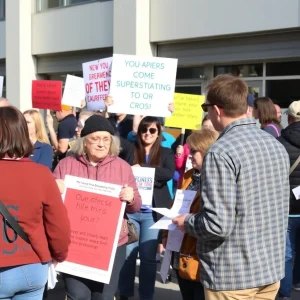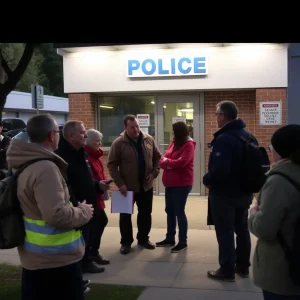Tropical Storm Debby Continues to Drench the East Coast
North and South Carolina Bear the Brunt of Its Impacts
Tropical Storm Debby’s wrath is being felt across the Southeast of the United States as it unloads heavy rainfall and triggers life-threatening floods. With the storm projected to make a second landfall on Thursday on the South Carolina coast, communities in North and South Carolina are facing substantial power outages, damage to infrastructure, and widespread flooding. The storm continues to regather strength over the Atlantic, casting a threatening figure over the American mainland and complicating rescue and relief efforts.
Historic Rainfall and Far-reaching Impacts
The intensity of the rainfall from Tropical Storm Debby has been historic in many parts, with the storm dumping large amounts of rain and causing widespread flooding over several days. Data shows that Debby has already turned roads into rivers and swamped homes in parts of Florida, Georgia, and South Carolina. Far-reaching and deadly, Debby has claimed the lives of at least four people in Florida, and one in Georgia.
Meanwhile, global warming caused by fossil fuel pollution continues to intensify these extreme weather events. Debby’s path through near-record warm waters in the Gulf of Mexico fueled its rapid growth before it made landfall as a hurricane in Florida. Despite the ongoing connectivity issues affecting the areas in the wake of the storm, updates and emergency information are constantly being relayed to those affected.
Local Measures and Preparations
With Tropical Storm Debby churning off the coast, preparations are underway to mitigate the storm’s potential destructive impacts. In Charleston, South Carolina, a curfew has been imposed, having commenced on Monday night. Although only one road in Charleston remains closed as of Wednesday morning, the restriction will continue to be enforced in the interest of public safety.
Torrential rain has temporarily eased in certain hard-hit areas. The reason being, tropical cyclones like Debby rotate in a counterclockwise direction and pull in surrounding air from all directions to feed their circulation. The storm has ingested dry air which limits further development, thereby stunting the growth of storms near the center of the cyclone. However, warnings persist as forecasts predict that heavy storms may originate closer to the storm’s center and potentially intensify the flooding in South Carolina.
Long-Term Consequences
Although urgent measures continue to be taken to manage the immediate impact of the storm, the long-term effects cannot be ignored. Flooded homes pose a threat of electrical hazards which will need to be addressed once water recedes. While outages are gradually being fixed, a significant number of homes and businesses remain without power.
In parallel with the direct physical damage, the psychological toll on the victims of the storm is also significant. The task of recovering and rebuilding in the hurricane’s aftermath can be daunting, with survivors often struggling to navigate a complicated web of insurance dealings, home repairs, and displaced communities. As post-hurricane heat waves become increasingly more common due to climate change, lack of access to crucial amenities like air conditioning further exacerbates the situation.
As Tropical Storm Debby continues to pose a substantial hazard, all residents in the storm’s path are urged to stay updated and follow local guidelines to ensure maximum safety during these trying times.



























